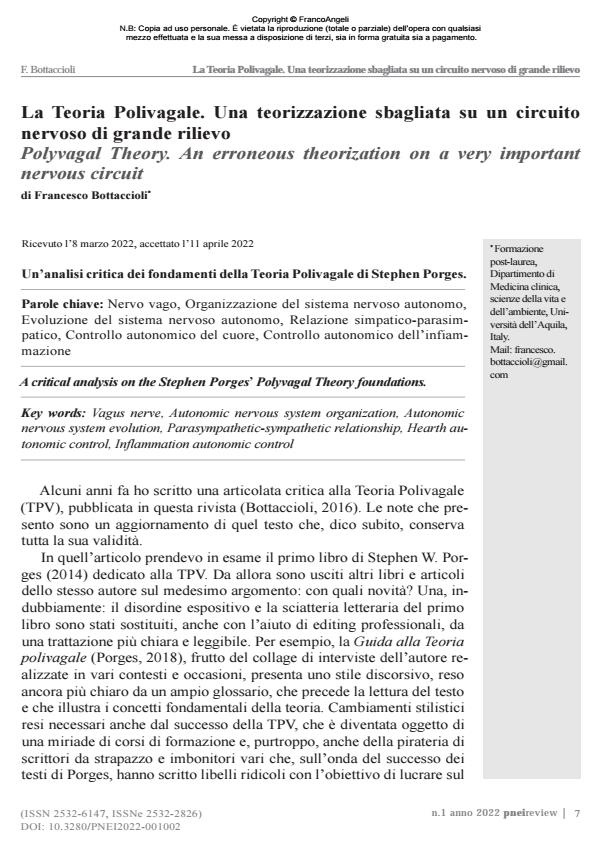Polyvagal Theory. An erroneous theorization on a very important nervous circuit
Journal title PNEI REVIEW
Author/s Francesco Bottaccioli
Publishing Year 2022 Issue 2022/1
Language Italian Pages 13 P. 7-19 File size 196 KB
DOI 10.3280/PNEI2022-001002
DOI is like a bar code for intellectual property: to have more infomation
click here
Below, you can see the article first page
If you want to buy this article in PDF format, you can do it, following the instructions to buy download credits

FrancoAngeli is member of Publishers International Linking Association, Inc (PILA), a not-for-profit association which run the CrossRef service enabling links to and from online scholarly content.
A critical analysis on the Stephen Porges̓ Polyvagal Theory foundations
Keywords: Vagus nerve, Autonomic nervous system organization, Autonomic nervous system evolution, Parasympathetic-sympathetic relationship, Hearth autonomic control, Inflammation autonomic control
Francesco Bottaccioli, La Teoria Polivagale. Una teorizzazione sbagliata su un circuito nervoso di grande rilievo in "PNEI REVIEW" 1/2022, pp 7-19, DOI: 10.3280/PNEI2022-001002